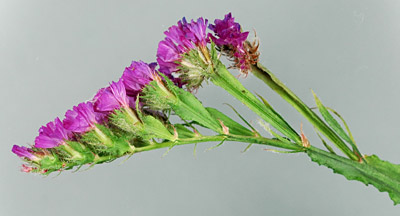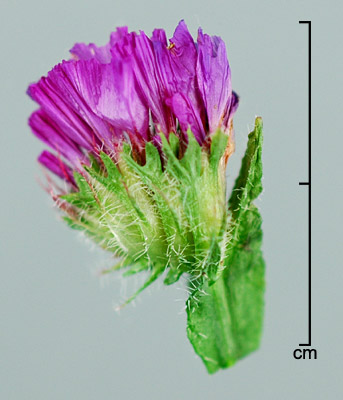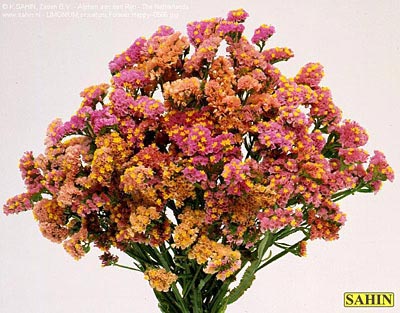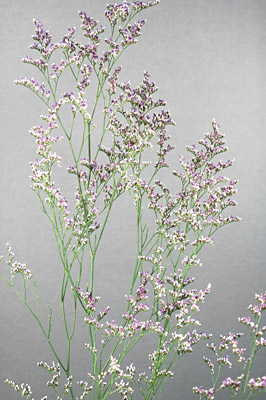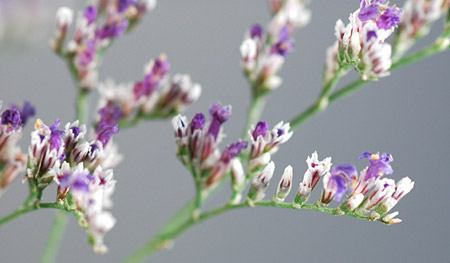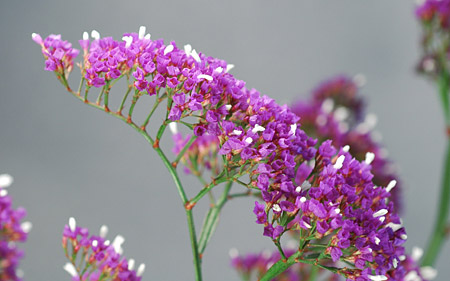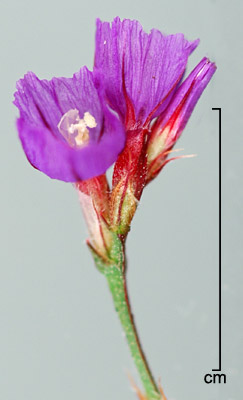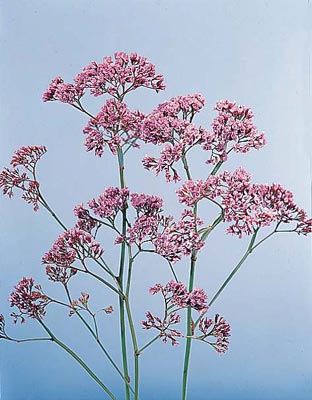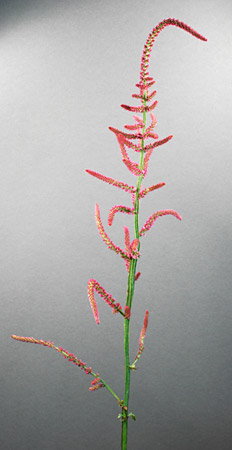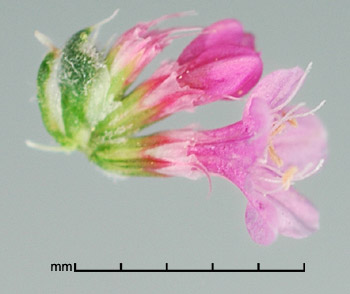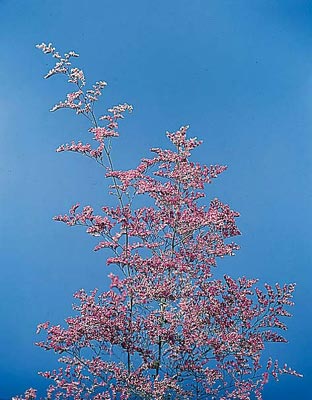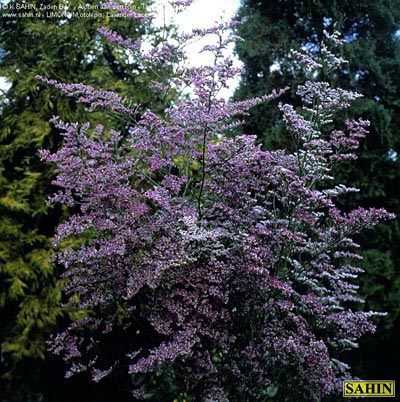| Home | Start key | Fact sheets | Glossary | Common flowers | ||
Limonium MillerPlumbaginaceae |
||||||
Alternate trade names
statice, misty, caspia Common names
statice Species cultivated
Most commonly cultivated Limonium sinuatum (L.) Mill. (annual statice), with its many cultivars, is among the most popular in the world Also common hybrids of L. latifolium (Sm.) Kuntze x L. bellidifolium (Gouan) Dumort. (caspia statice), e.g. 'Beltlaard' and the Misty series L. perezii (Stapf) Hubb. (seafoam statice) L. tetragonum (Thunb.) Bullock (=L. sinense (Girard) Kuntze) (confetti statice; yellow statice) Other species L. altaica ('Emille' cultivars) L. bellidifolium (Gouan) Dumort. (=L. caspium (Willd.) Gams) L. bonduellii L. ferulaceum (L.) Kuntze (caspia) L. gmelinii (Willd.) Kuntze (Siberian statice) L. otolepis (Schrenk) Kuntze L. peregrinum (Bergius) R.A. Dyer (=L. roseum (Sm.) Kuntze) L. suworowii (Reg.) Kuntze (=Psylliostachys suworowii (Reg.) Roshk) (rattail statice). Origin
Europe, Asia. Brief characterization
Leafless stems; inflorescence branches sometimes green and more or less prominently winged (as in Limonium sinuatum and L. perezii); terminal one-sided spikelets, these sometimes compound (one-sided spikelets of one-sided spikelets, as in L. sinuatum), in much-branched panicles or clustered in racemes along few-branched inflorescences (L. suworowii); flowers numerous, small, ca. 4-15 mm long; colored, funnelform to tubular petaloid calyx (except in L. suworowii); corolla often less conspicuous than calyx, with petals united only at base. Cultivar and/or species variation
One of the most popular cut flowers in the world, used as a filler. Limonium sometimes has a malodorous smell (e.g. L. sinuatum, L. altaica, L. hybrids). L. sinuatum cultivars and L. perezii have bold inflorescences, with winged stems of various thicknesses.The hybrids, L. altaica and L. tetragonum, are characterized by more delicate, much-branched inflorescences with mostly unwinged or slightly winged stems. Branching structure varies. Some cultivars are doubles. L. sinuatum occurs in many bright colors (owing to calyx color); the white corolla emerges in some cultivars; L. perezii flowers are purple, with conspicuous white corollas. The hybrids are generally light-colored in blue, pink, rose, and white. The primary inflorescence branches of L. altaica curve downward, and the flowers are mostly pink and lavender. L. tetragonum is usually yellow, although the Diamond series has flowers in other colors. May be confused with
Misty series and some other cultivars may look similar to Gypsophila or Trachelium Countries exporting
Egypt, Ethiopia, Kenya, South Africa, Zimbabwe. |
